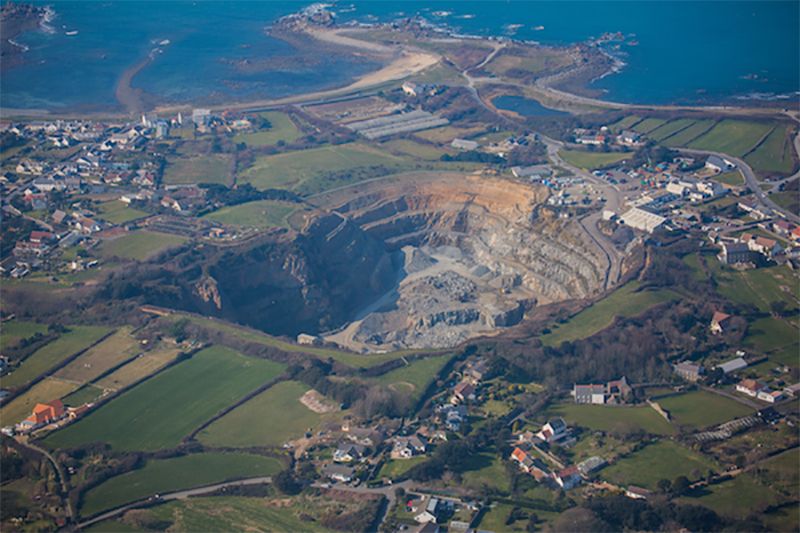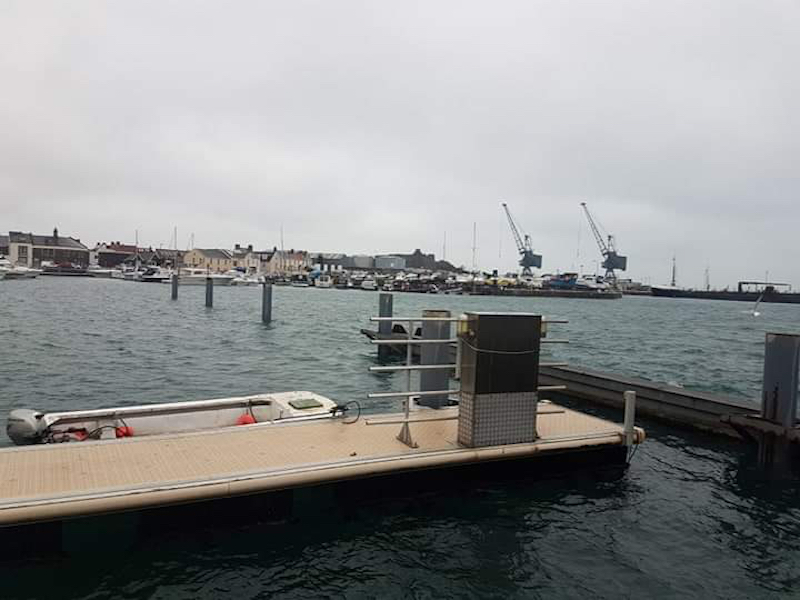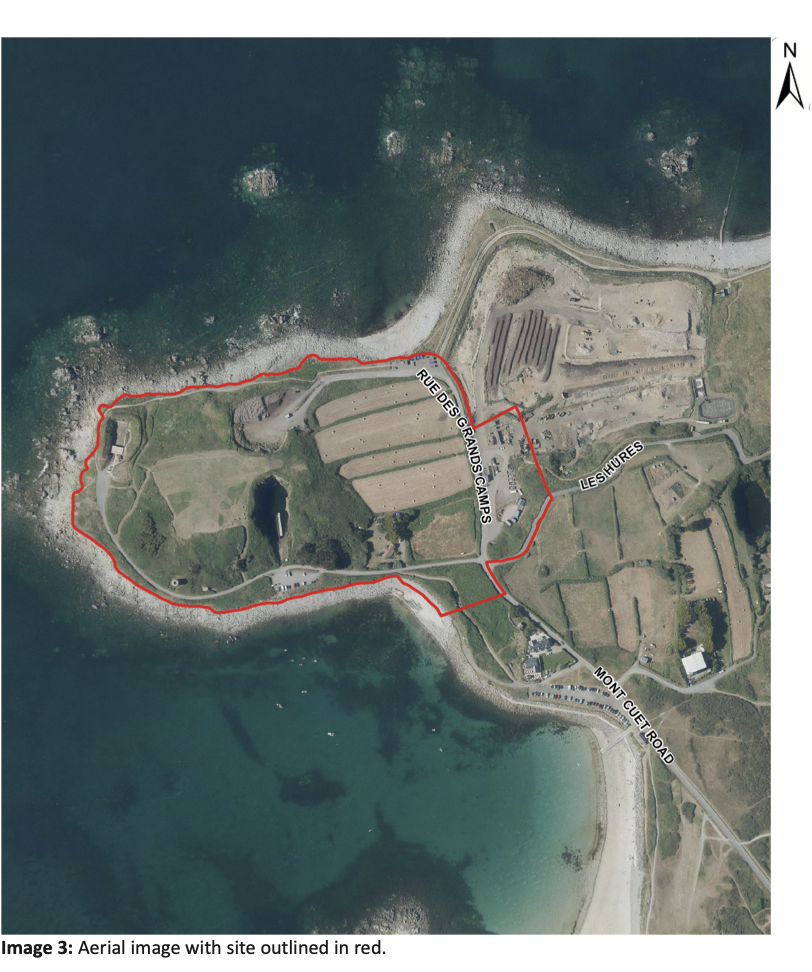


It’s been a decade since Chouet was earmarked for development as the next source of aggregate in Guernsey, and with just two-and-a-half years left before Les Vardes stops operating in its current form, the States is being faced with an expensive decision.
There are seven years left before Les Vardes is depleted of its granite reserves, but prior to that, it would require the Ronez stone plant to be moved in the next 30 months in order to access the final reserves beneath it.
The States of Guernsey needs to make a decision on whether or not to import aggregate, or source it locally.
Aggregate has various uses in the construction industry and comes in a number of forms. Raw granite is processed at stone crushing plants and utilised in products from concrete to hardcore.
The granite trade is as Guernsey as Guernsey gache, with the industry starting in the late 18th century. Les Vardes quarry itself is 200 years old and was being used during World War 2. It has been extended once before, but no further viable extensions to the site are now possible.

Pictured: Les Vardes quarry supplies 100,000 to 125,000 tonnes of aggregate to the island every year.
The situation requires the States of Guernsey to decide whether to import aggregate or quarry it locally; both options require serious strategic choices to be made.
It’s important to note that recycled aggregate is available on island, and firms in Guernsey do pretty well to produce as much as they are able to. But this is limited by the amount of excess rubble received from construction firms in the community.
So which choice is better?
Importation
Ronez operates the quarry in Les Vardes and the processing plant at Les Monmains. We spoke to the Director of the firm about both options for securing Guernsey’s future aggregate supply.
“This pathway [importation] would require urgent and significant investment in infrastructure and storage facilities,” said Steve Roussel.
“First off, importing aggregate is estimated to be 25% more expensive than quarrying on island. This would increase costs to the building trade.”
“Extra capacity would be needed at St Sampson’s Harbour as the harbour limits the size of ships that can dock there. It can’t cope with larger ships.”
Due to Guernsey’s tides, there are also limits on the days that ships can dock.
Additionally, the cranes at St Sampson's Harbour are nearing the ends of their lives. They can cope with small imports of aggregate but would need to be refurbished or replaced to cope with increased loads.
Storage would also be a major problem, said Mr Roussel. At the moment Ronez stores any imported aggregate at its Les Monmains site. There simply isn’t the facility to store large quantities, so investment in storage solutions would be necessary.

Pictured: St Sampsons harbour currently sees only small amounts of aggregate imported into the island.
A Traffic Impact Assessment would need to be undertaken to better understand the strain on infrastructure from lorry loads of aggregate being brought into the island.
“This is not our preferred choice,” said Mr Roussel.
The alternative would change the face of the island, and was nearly enacted a few years ago.
Chouet Headland
The long-mooted alternative is Chouet Headland. 8.6 hectares which would incorporate the Mont Cuet tip and see a quarry developed to the west of the green waste site.
A study in 1984 deemed the headland as the only viable source of raw stone material in the island; roughly 3.5 to 4.5 million tonnes worth could be available. This is enough to supply the island’s needs for more than 33 years.

Pictured: Chouet was earmarked for development as a quarry in 2011 by the Strategic Land Use Plan.
In 2016, a government steering group concluded that Chouet was the best option for the future of Guernsey’s aggregate needs and the Committee for the Environment and Infrastructure at the time endorsed the project. A draft development framework was created and revealed to the public in 2019.
The framework highlighted that "being able to produce a range of aggregates on the island reduces the need to import aggregates from overseas, thereby providing a cost effective and sustainable supply to the island."
However, it was decided that a more strategic decision would be needed to take this monumental step, and a policy letter would have to be drawn up by E&I.
The framework was never adopted by the Development and Planning Authority and the impact of the corona virus pandemic saw that topic fall by the wayside in 2020.

Pictured: “To continue quarrying in Guernsey secures employment for about 20 people,” said Mr Roussel.
The issue of aggregate supply was raised in Policy & Resources’ recently released Government Work Plan as an ‘Emerging Strategic Recovery Action’ and is currently in the planning stage.
It’s hoped that a policy letter will be making its way to the States for debate in the early months of this year.

Pictured: P&R considers the issue of high importance in its GWP document.
Comments
Comments on this story express the views of the commentator only, not Bailiwick Publishing. We are unable to guarantee the accuracy of any of those comments.